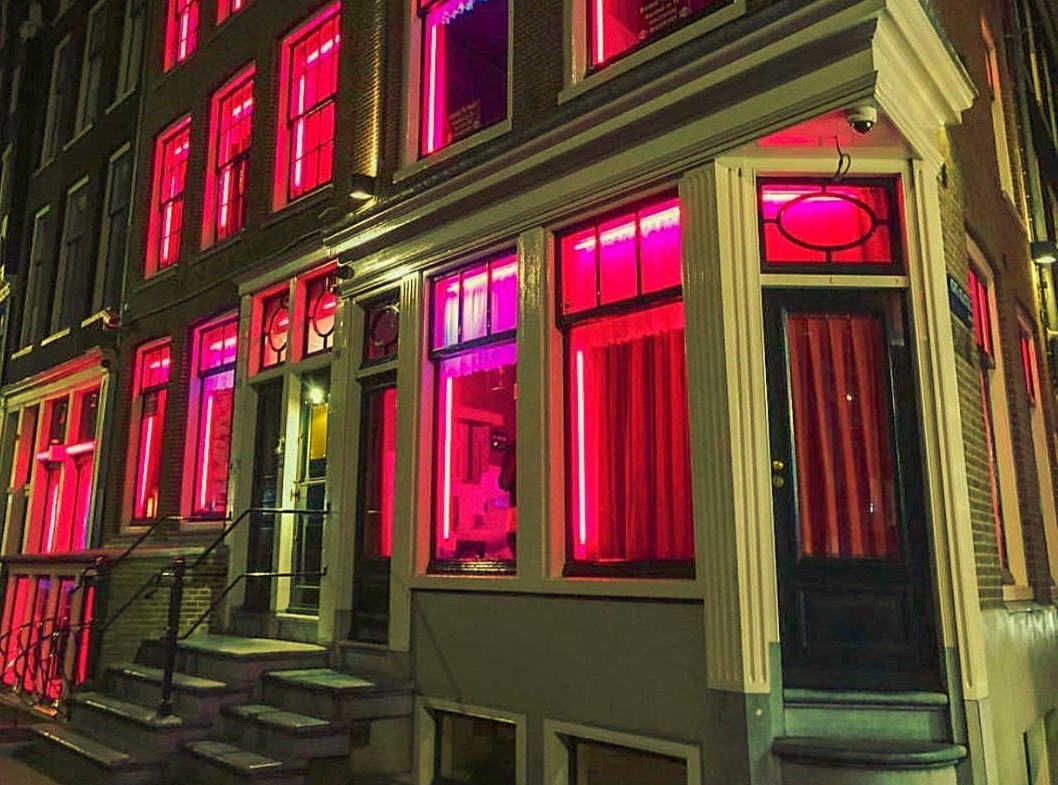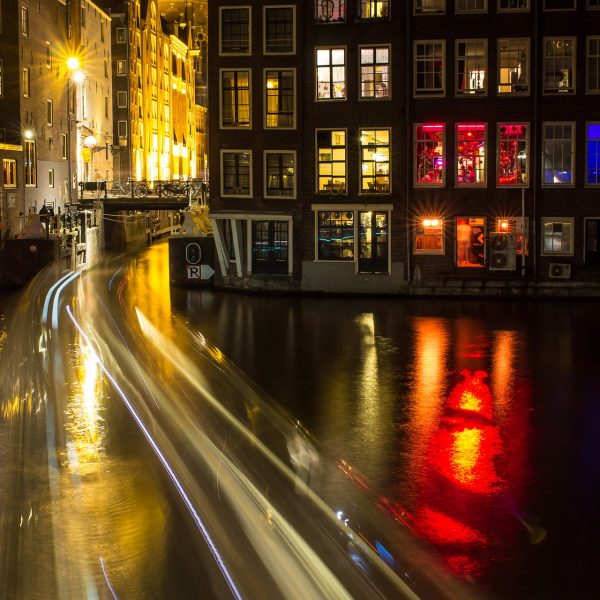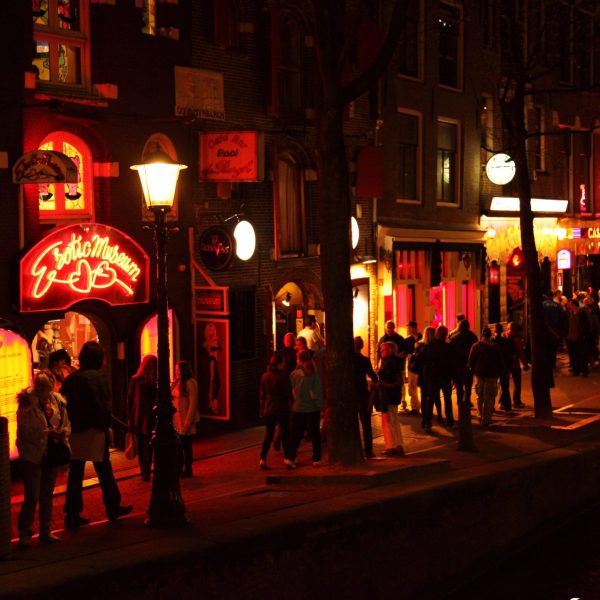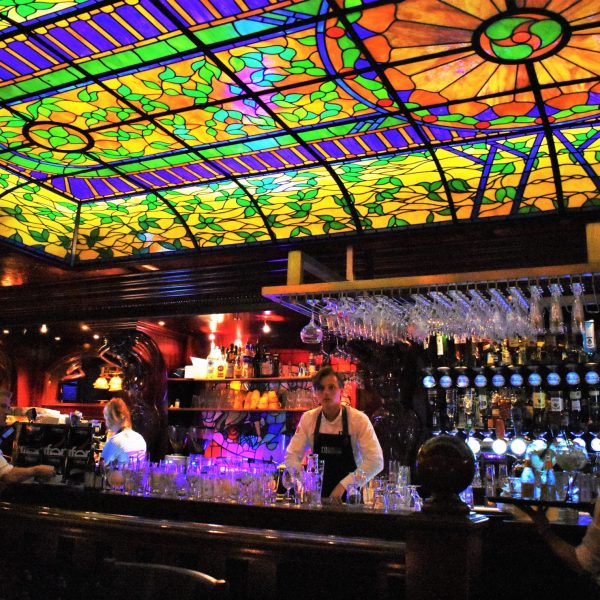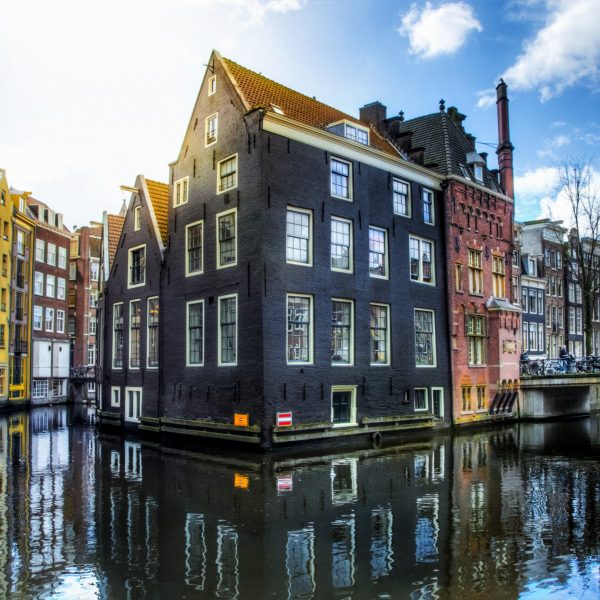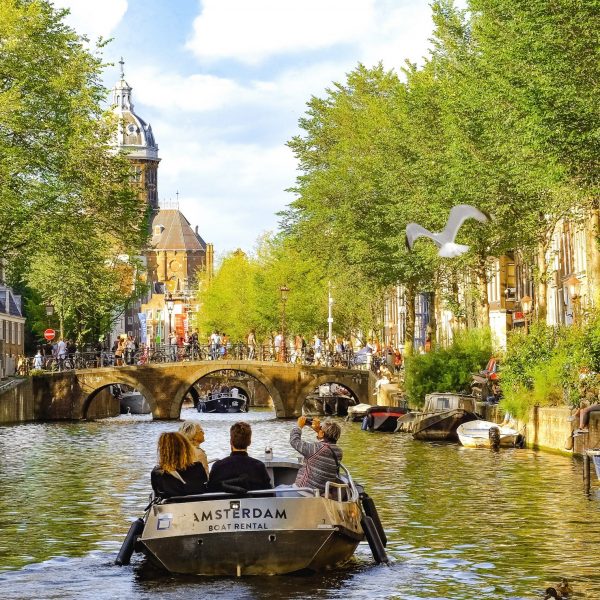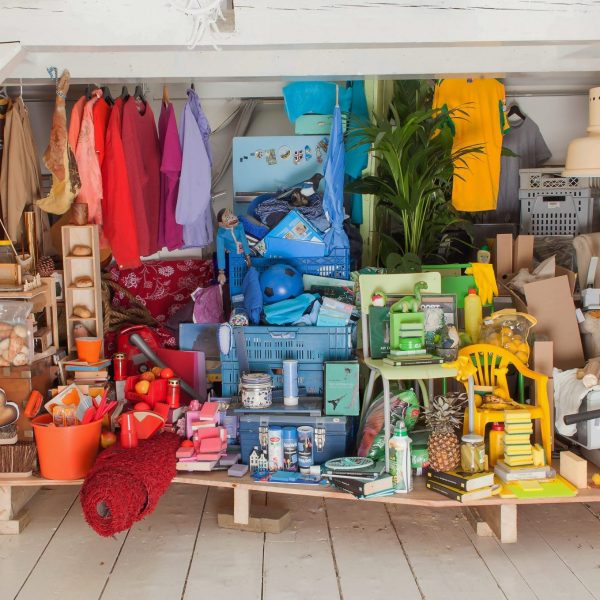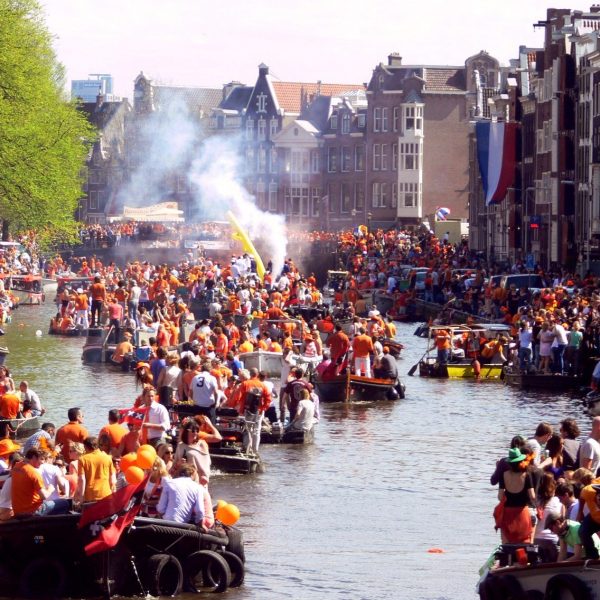The history of Red Light District is really long – it dates back to the Middle Ages! This infamous and highly controversial part of the city is shocking even nowadays, decades after its legalisation.
It remains one of the major tourist attractions of the city, as it is so visible and easy to observe, and so uncommon. This rather unique situation of having approximately 19 streets in the historical city centre occupied by legal prostitution gave certain fame to Amsterdam.
The Beginnings of De Wallen
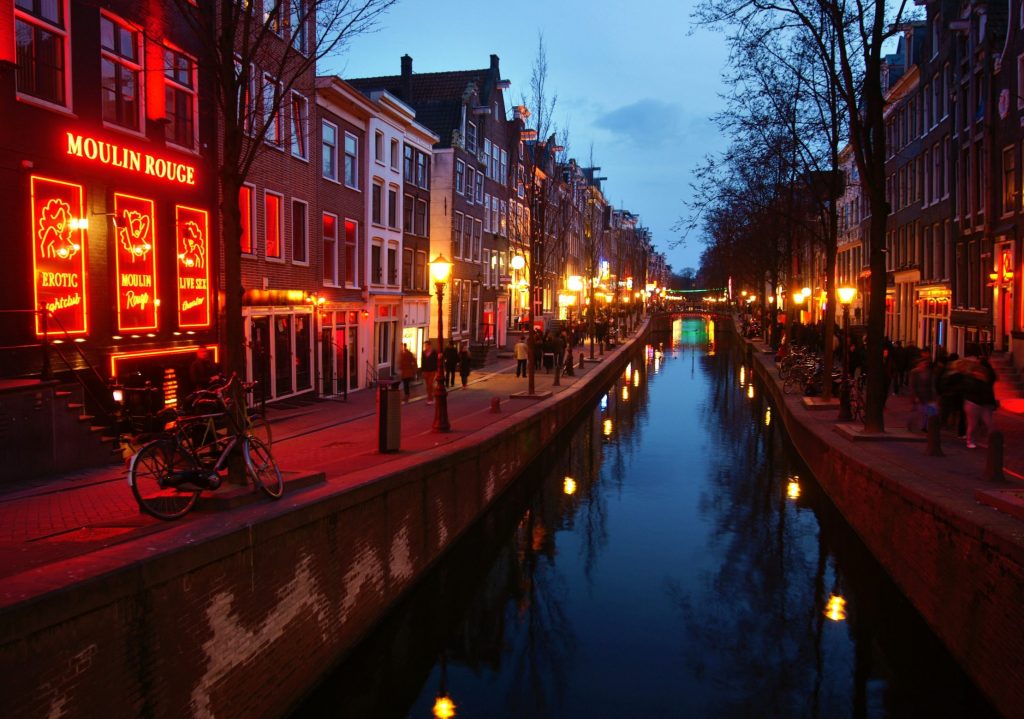
History of Red Light District dates back to the Middle Ages
It is actually the most historical part of the city. The oldest profession in the world started in Amsterdam already around the beginning of the 13th century, when it was only a fishing village with barely two lines of canals. Around the dam on the Amstel river, on the crossroads of streets and canals of Damrak and Rokin, there was a harbour, and around it, the migrants were settling. Amsterdam was steadily growing, more merchants and sailors and fishermen were coming to city, and the prostitution grew in the area.
Back then, the city was surrounded by soil walls, in Dutch called De Wallen = the walls. It still remains the name of this district of the city, only in other languages called Red Light District.
The Church District
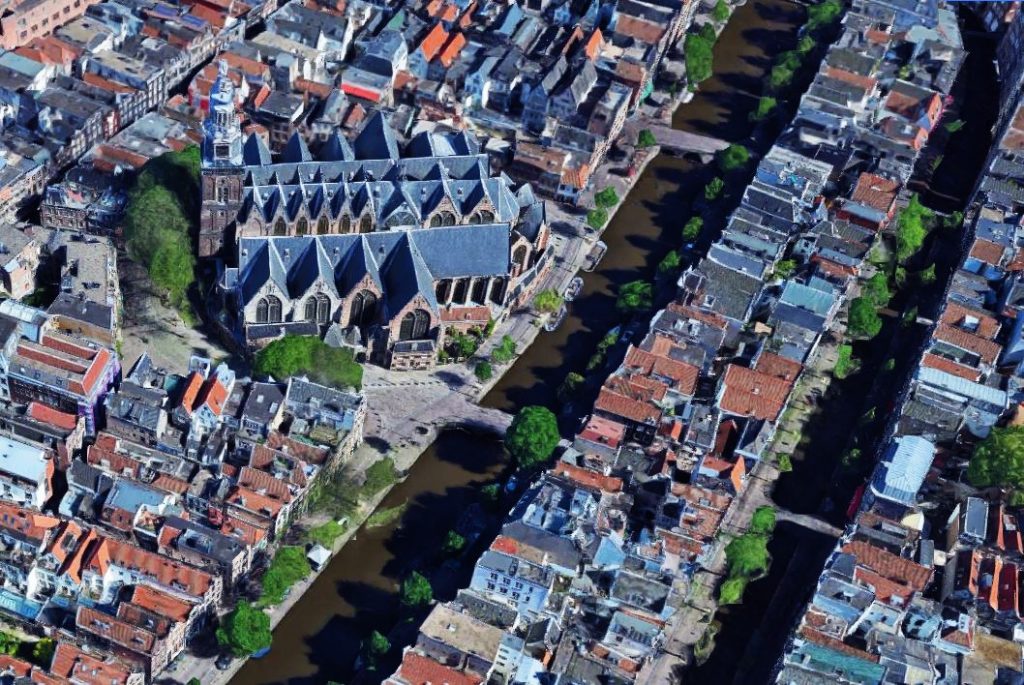
The Old Church and the Red Light District in Amsterdam (copyright Google Maps)
Amsterdam became a very religious city, and several monasteries and churches were built, concentrated close to De Wallen. The oldest monument in Amsterdam – The Old Church (De Oude Kerk), built in 13th-14th century, is right in the middle of this area. Quite shockingly, the brothels were established subsequently adjacent to its walls.
From Crime to Profession
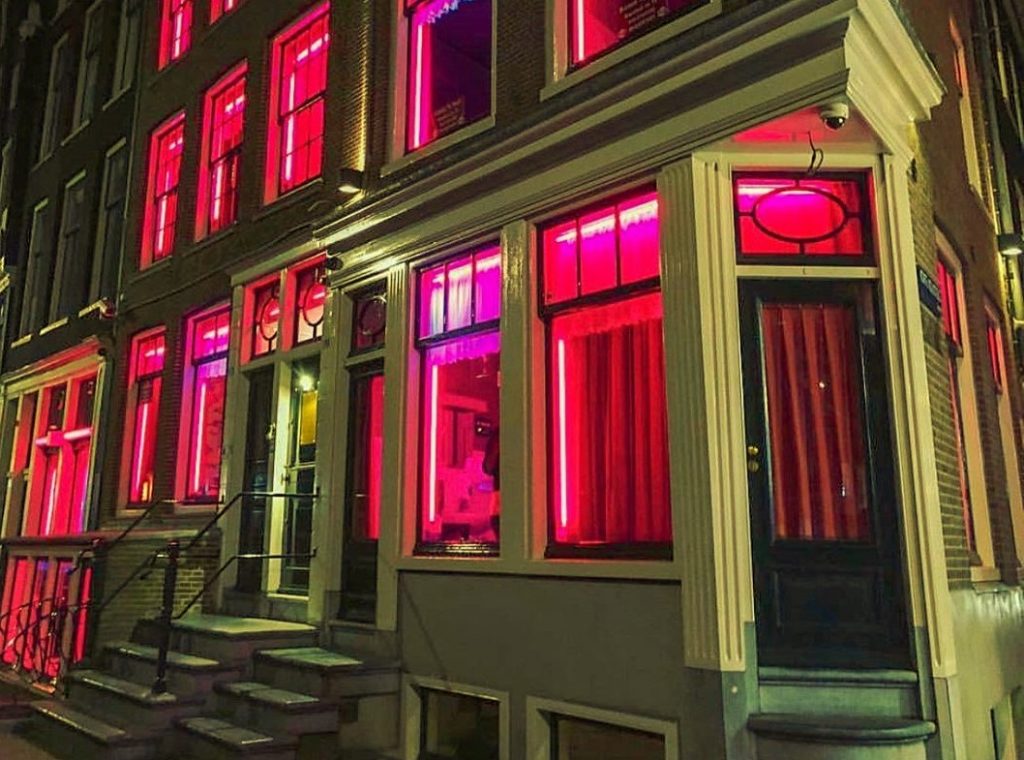
Red lights in Red Light District
The government of Amsterdam has changed the laws regarding the work in De Wallen several times during centuries. There were times were sex work was legal, then it was completely banned, in other times it was tolerated, and in other times partially tolerated but with restrictions.
Crime and Punishment
In the late Middle Ages, the prostitution in Amsterdam started to be more and more restricted. Priests and men who were married were not allowed to go to this district. When in 1578 the city goverment became Protestant, the paid sex has become a punishable crime. The “trade” continued, but like in every country, hidden and discreet – in inns and pubs. It went on like this more less until the 18th century, when prostitutes started to work in game parlours or casinos, with their rooms upstairs in the spot.
The Windows
In the 1930s, prostitutes were banned from staying on the streets or sitting in front of their rooms. That’s how window prostitution emerged: by the law, they can sit or stand by the window, inviting the customers, but they can’t stay on the streets.
Nowadays, there are almost 300 such window “displays” with cabins in Red Light District in Amsterdam. The name of the district is very real here – they are all lit by bright red lights.
Rights & Taxes
Since 1988, prostitution has been deemed a legal profession by the government of the Netherlands. Sex workers were given the same rights as any other profession, they started declare their income and pay regular taxes, just like any other working citizen. In 2000, public houses became legal and legitimate businesses.
Human Trafficking
Please be aware that the fact the prostitution is legal doesn’t mean that there isn’t still crime and forced work around it. The city council keeps on restricting the area and closing down many of these “businesses” because of that. There is a plan of relocation of the Red Light District further from the city centre, revitalizing the historical area. If you go to the area, be respectful towards the sex workers and don’t take any photos of them – it’s forbidden.
Red Light Attractions
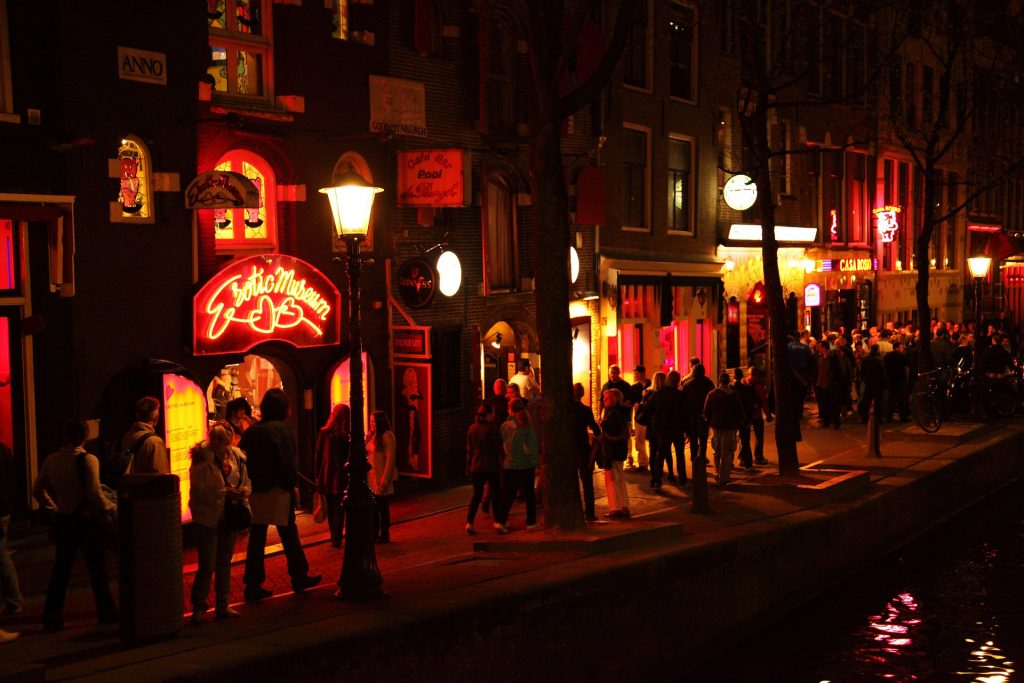
Nightlife in Red Light District
Red Light District is famous also for erotic theathres, Erotic Museum, Red Light Secrets – Museum of Prostitution, live shows and sex shops.
Anonymous Art
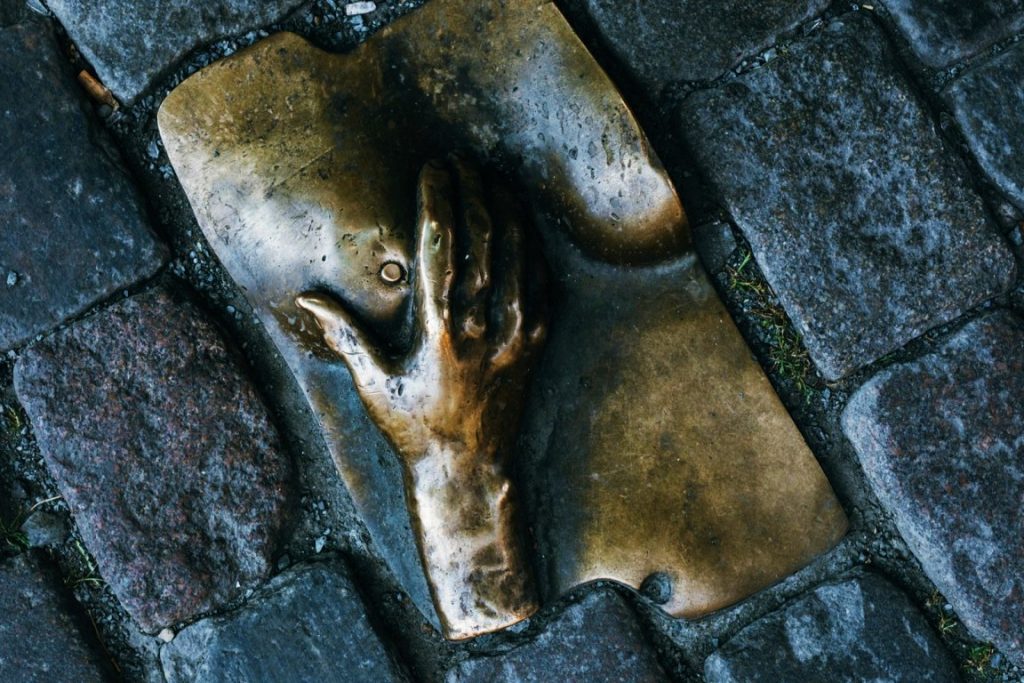
Bronze reliefs around Red Light District
In several places in the area there are bronze sculptures and reliefs half-hidden among the cobblestones of the street, donated by an anonymous artist. There is also a statue in front of the Old Church – a tribute to sex workers called Belle – depicting a woman standing in the open door.
Coffeeshops & Pubs
Red Light District is also one of the most popular places in Amsterdam to go out in the evening, with its numerous pubs, clubs and many cannabis bars – coffeeshops, including The Bulldog – the oldest coffeeshop in the Netherlands. The atmosphere in the area is lively and dynamic, and there are always crowds around.
Read about Nightlife in Amsterdam – Best Clubs, Bars and Coffeeshops
Read about Best Restaurants in Amsterdam & Areas to Eat Out
Discover the History of the Area
Since it’s the medieval part of the city with a lot of old streets and monuments, there is a variety of walking tours to discover the history of this area.
The guided tours in Red Light District might be banned by the city council in the future, in order to respect sex workers, so this year might be the last chance to participate.
Amsterdam Red Light Walking Tour & Secrets Museum Tickets
Amsterdam Red Light District 2-Hour Walking Tour

